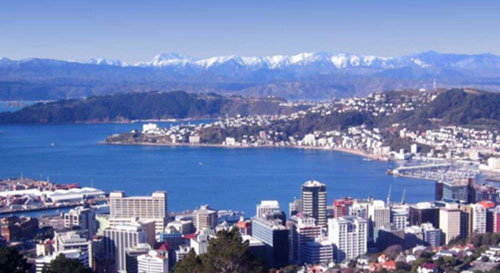Why do parents of younger students prefer to send their children to study in New Zealand? 4632
 Rieter University,The first batch of overseas study institutions certified by the Ministry of Education,Accredited by the world's top ICEF Education Exhibiting Organization (Screened Agency),Member of the National Overseas Study Agency Service Alliance (COSSA),Member of Beijing Overseas Study Service Industry Association (BOSSA),China Education Association for International Exchange self-funded study abroad intermediary service branch director unit,More than 10 years of experience in overseas study and immigration services,We have helped thousands of students achieve their dreams of studying abroad and finding jobs。
Rieter University,The first batch of overseas study institutions certified by the Ministry of Education,Accredited by the world's top ICEF Education Exhibiting Organization (Screened Agency),Member of the National Overseas Study Agency Service Alliance (COSSA),Member of Beijing Overseas Study Service Industry Association (BOSSA),China Education Association for International Exchange self-funded study abroad intermediary service branch director unit,More than 10 years of experience in overseas study and immigration services,We have helped thousands of students achieve their dreams of studying abroad and finding jobs。
If you have any questions about studying abroad and working abroad, please call us 022-2328-9071/9075
This is a question often asked, why not choose the United States, the United Kingdom, Ireland, or Australia to send children to micro study abroad, but choose New Zealand?
Rieter experts from the weather, geographical, human and three aspects to answer:
“天时”
If the children studying in China want to experience the foreign transfer education, but do not want to delay too much domestic learning, is bound to use our domestic winter and summer vacation time。Only New Zealand and Australia's primary and secondary schools can meet the needs of parents and students in terms of semester arrangements。Then, Chinese students can take advantage of the winter vacation in China to participate in the first semester in New Zealand。Or take advantage of the summer break at home to start the third semester of placement in New Zealand。
There are 4 semesters per year in New Zealand, and the approximate duration is as follows:
Semester 1: End of January to mid-April - 2 weeks vacation
Second semester: End of April to beginning of July - 2 weeks holiday
Semester 3: Mid-July to late September - 2 weeks vacation
Semester 4: Mid-October to mid-December - 6 weeks vacation

“地利”
These English-speaking countries listed above are far away from China, and the plane range is more than 8,000 kilometers (more than 10 hours of flight), but Australia and New Zealand and the domestic time difference is smaller, only 2-4 hours (the local daylight saving time difference of 3-5 hours), the time difference is less trouble for us。
In addition, we went to the southern hemisphere and saw a different sky than we did in the northern hemisphere。It will no longer be the Big Dipper or the North Star that will guide us at night, but the Southern Cross。And the direction of the magnetic field also changes, such as a pool of water, the rotation of the water will be the opposite direction of the northern Hemisphere。These differences in natural phenomena that can be felt in person will inevitably expand our cognition, and perhaps stimulate the child's inner desire to explore。
Auckland, New Zealand's largest city, has been among the top 10 best places to live in the world for many years,Even in the southern winter,The average temperature in Auckland is also around 15 degrees,The lawn is still green,Domestic compatriots don't have to wear long Johns,This is better than Melbourne, Australia, which is also in the top 10 most livable cities in the world。

“人和”
The United States, Canada, Australia and New Zealand are traditional destination countries for Chinese immigrants, but so far only New Zealand has signed a free trade agreement with China, which shows that Sino-New Zealand relations are still good。"The friendship between countries lies in the amity between people" The good relationship between countries also reflects the state of the Chinese people in the local treatment from one side。
Some school districts in Oakland with high Chinese populations even offer Chinese language classes, and community libraries have easy access to Chinese books and periodicals。Children will usually be assigned a Mandarin speaking child as a daily partner to help them adjust as quickly as possible。
Compared with Australia, New Zealand primary and secondary schools are more experienced in accepting international students, and the micro-study program is more mature。When international students, especially Chinese students, participate in micro-study abroad, the school will arrange more targeted activities and learning, and students will gain more。















